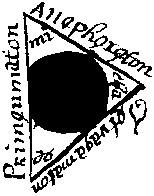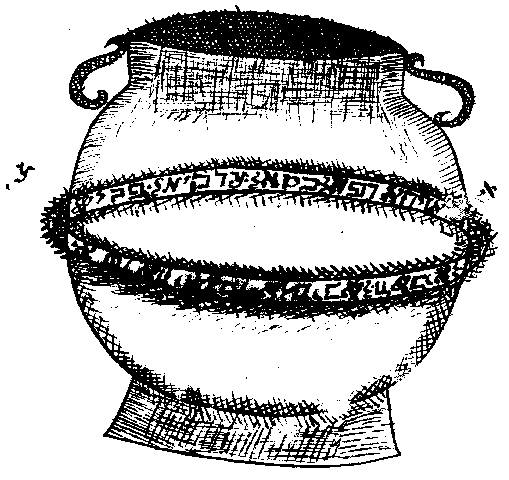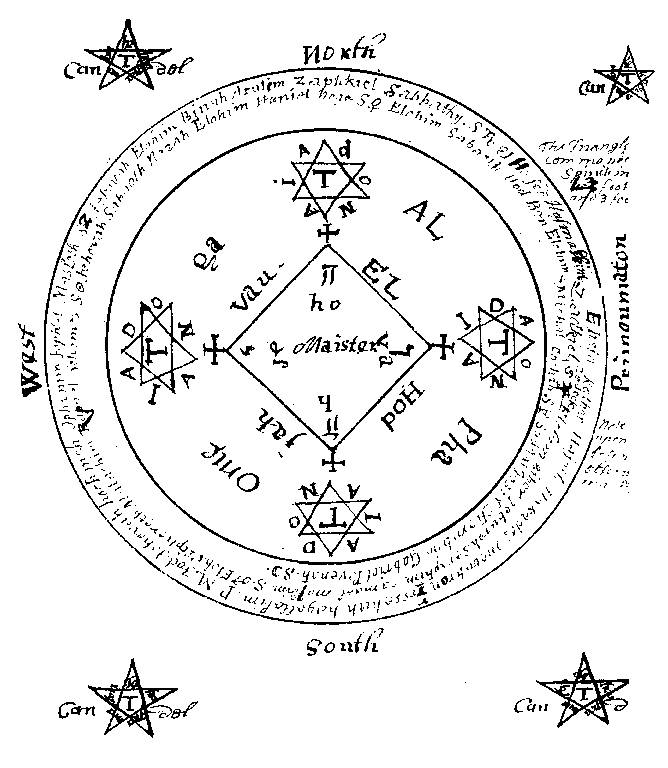Some of the entities in the Ars Goetia must have their seals made into a lamen (a kind of shield one wears over the chest); the Goetia states that these seals must be cast out of specific metals. Additionally, Ars Goetia states when each class (King, President, Duke, etc) may be bound.
 The binding occurs within an apparatus (pictured above) consisting of a circle within a triangle; the entity then gets shut inside of a brass container (pictured below).
The binding occurs within an apparatus (pictured above) consisting of a circle within a triangle; the entity then gets shut inside of a brass container (pictured below).
A circle with divine names inscribed on it also figures into place as a protective boundary (pictured below). The Ars Goetia as a magical system can be done to the specifications mentioned in the text. The down-side to this is the cost, whether money or time. But at its core, the operations involve a sigil of the entity you wish to call and the sorcerer.
Everything else adds to ambience and can be done away with if you are willing to substitute the brass container for another object to fix the entity to; the circle and triangle and the larger circle can be drawn out, or just imagined.
The vast majority people who claim this works use methods influenced by Masonry (by way of the Golden Dawn) and they claim it is about invoking a certain feeling — the feeling of “what it is like” to be King Solomon, summoning these entities. Some people need to go all out and use props. Some people don’t. But if you wanted to work on a piece of nice paper and thick ink, just going the sigil route is by no means less effective. The caveat is that by doing this kind of “Solomonic” technique, you are literally pretending to be a Jewish man asking god to send you a demon who will give you money, access to women, and so on. That seems problematic to me.
To do this, one still needs a medium to evoke with. This can be a bowl of red wine, or salt water, or thick smoke from incense, or a dark mirror.
From there, use the prepared sigil and gaze at it until it a) your vision bears a reverse-colour after-image, then b) flickers and glows and lastly c) it remains in your visual memory. With it in your memory, look at your evocation medium (the liquid, smoke, or mirror etc). Then write down whatever comes to you.
If you need a little more structure to it, you chant the Goetic enns (barbaric phrases for evoking each demon).
Banishing — before doing the operation, you can banish. Some paradigms use a Banish+Invoke+Evoke structure for Goetic operations. Once you finish the operation, you may also recite a petition to leave (either one contained in the grimoire itself, or something of your own invention).
Banish and Invoke using the Lesser Banishing/Invoking Rituals of the Pentagram (the Goetic entities are elemental not planetary, so the Pentagram rituals work better than the Hexagram rituals); then evoke using the scrying medium and possibly the Goetic enn [link to the Enn in comments]. Some add in an intermediary step by also invoking an angel who corresponds to an entity (to find out which angel corresponds to which entity, use a book of correspondences such as Crowley’s Liber 777)
This last modality shows up in two other grimoires — Grimorium Verum and The Book of Abramelin the Mage. In these, the operations rely on Scirlin and the operator’s Holy Guardian Angel respectively.
